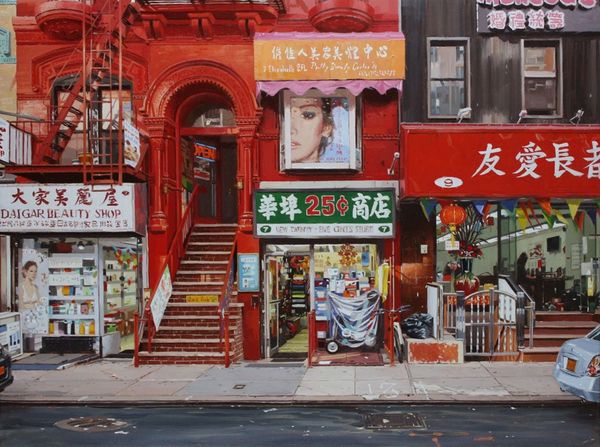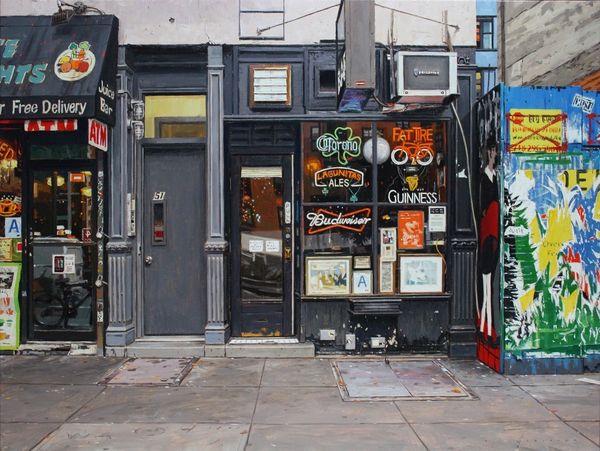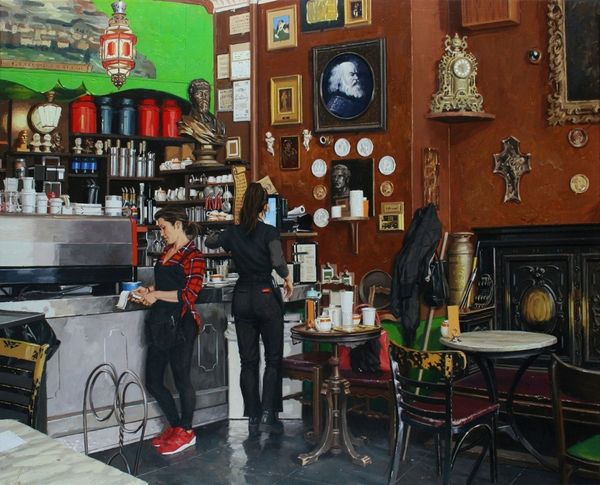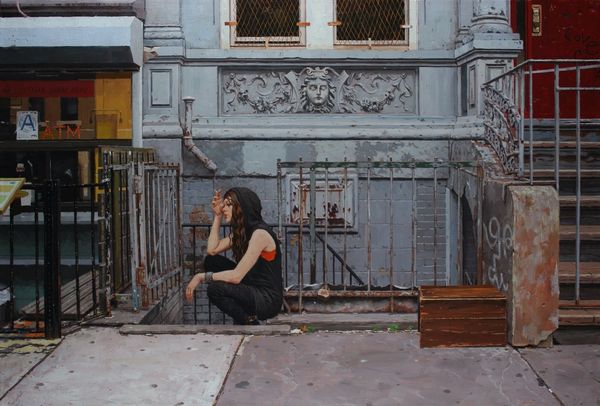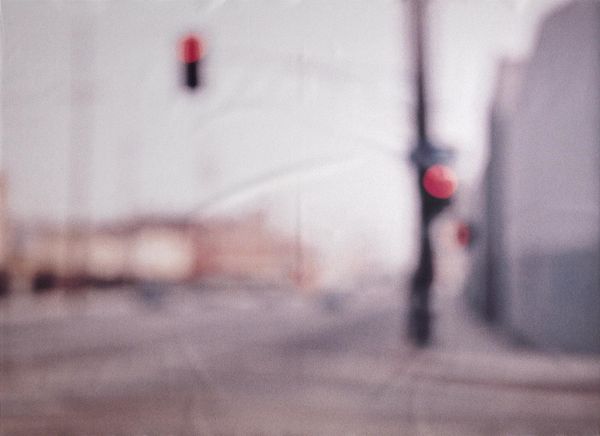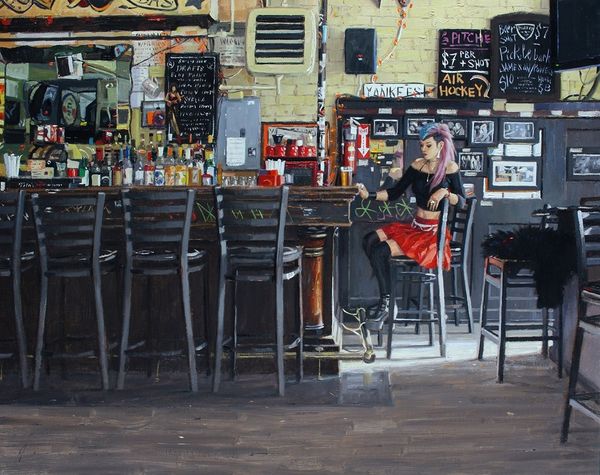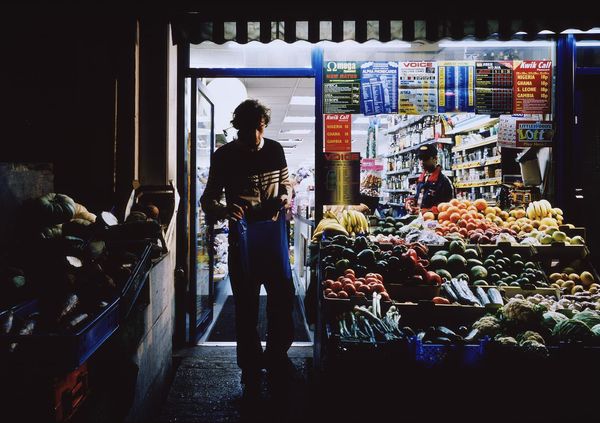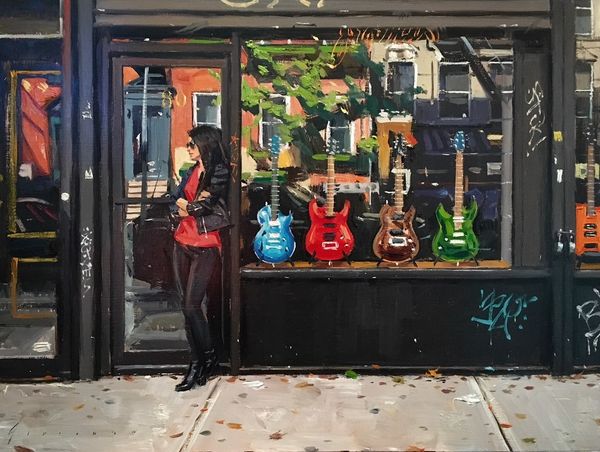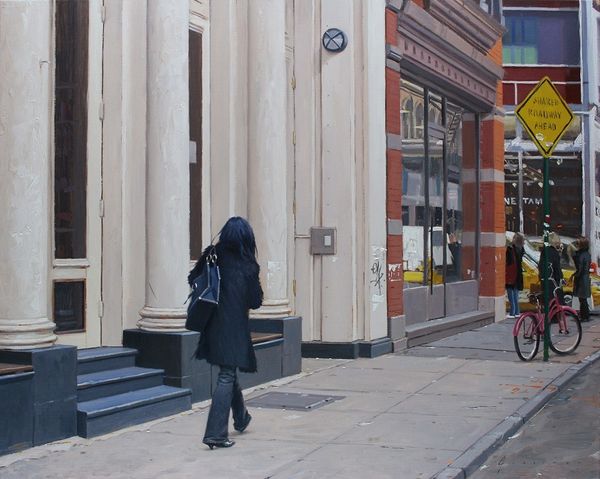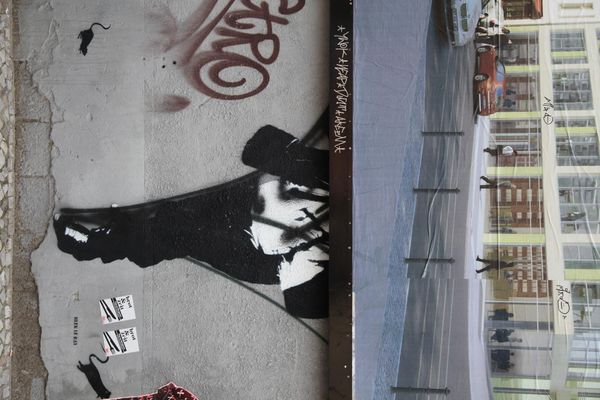
painting, acrylic-paint
#
portrait
#
contemporary
#
painting
#
graffiti art
#
street art
#
acrylic-paint
#
street-photography
#
street photography
#
street fashion
#
cityscape
#
realism
Copyright: Modern Artists: Artvee
Curator: This is "East Village Diptych," a painting by Vincent Giarrano. Editor: My first impression is melancholy. The hunched figure and muted colors, despite the setting, create a sense of urban isolation. Curator: Absolutely. The diptych presents a split view, drawing the viewer into a very particular street-level perspective. The use of acrylic on canvas captures the grit and realism synonymous with street photography, don't you think? It begs the question, what commentary is being made? Editor: Definitely realism, but I read the perspective as subtly challenging assumptions around class and access. Who gets to occupy urban spaces, and how? The central figure, possibly homeless, contrasts against the restaurant setting. The artwork places contemporary issues regarding urban space, community and individual experience into an artistic arena. It suggests these problems aren't disconnected or distant. Curator: I'd also highlight Giarrano's choice to paint a diptych, underscoring the theme of duality. Consider the use of contrasting light and shadow, also—the way light illuminates the figure, against a dimly lit entrance. The diptych format allows us to look at two parallel realities simultaneously. What might that represent to viewers from different backgrounds? Editor: It speaks volumes about lived experiences depending on various factors such as socioeconomic status, access to resources, or societal standing. Furthermore, this contrast causes one to examine existing institutional structures—museums and galleries themselves included—for their role in curating access and creating social separations. Curator: And this points to the complex social politics within urban areas and asks fundamental questions of inequality, representation and individual vs collective struggles experienced within our society, particularly within marginalized communities or classes. Editor: Precisely, Giarrano prompts a broader critical reflection around how art addresses those power imbalances and contributes or challenges dominant ideologies within artistic representations. Curator: Thank you for unpacking those dynamics with me. It offers valuable insights into understanding how this piece connects our broader discussions about urban identity. Editor: A powerful, complex work. I walk away seeing so much that begs examination beyond surface interpretations.
Comments
No comments
Be the first to comment and join the conversation on the ultimate creative platform.

